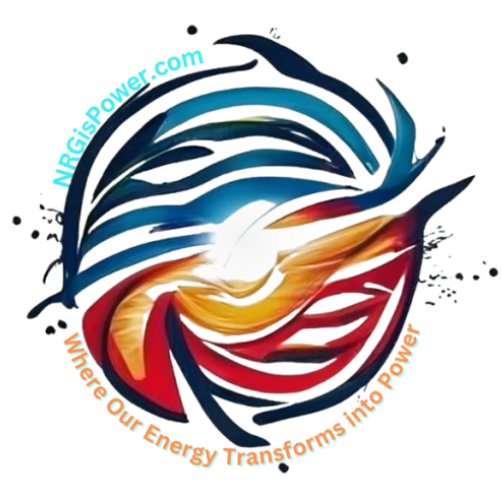What is Prana Vinyasa Yoga? Let’s find out
Prana Vinyasa Yoga is a dynamic and flowing style of yoga that is designed to integrate breath, movement, and energy to create a holistic practice. Developed by renowned yoga teacher Shiva Rea, Prana Vinyasa combines the principles of Vinyasa Yoga with a deep focus on prana (life force energy) and its movement through the body. This practice is rooted in the understanding that the breath is the key to unlocking the flow of prana and that by moving in harmony with the breath, we can access and direct this vital energy to achieve physical, mental, and spiritual well-being.
Key Features of Prana Vinyasa Yoga:
- Breath-Centered Flow: Prana Vinyasa emphasizes the seamless connection between breath and movement, creating a fluid and continuous flow. The practice often involves flowing sequences of asanas (yoga poses) that are synchronized with the inhale and exhale, much like traditional Vinyasa, but with an added focus on cultivating and moving prana through the body.
- Energy and Vitality: Prana Vinyasa aims to enhance the practitioner’s awareness and experience of prana, or life energy, which is believed to flow through the body via energy channels called nadis. By coordinating breath and movement, practitioners are encouraged to cultivate energy, release blockages, and experience vitality throughout the body.
- Creative Sequencing: Unlike traditional static sequences, Prana Vinyasa features creative, flowing sequences that often change from class to class, allowing practitioners to explore various aspects of their practice. The sequences are often inspired by natural elements, such as the flow of water, the grounding energy of the earth, or the expansive qualities of the sky. These sequences are designed to open and activate different parts of the body, bringing awareness to energy flow and encouraging deep transformation.
- Prana Activation and Embodiment: The practice of Prana Vinyasa involves movements and postures that are intended to awaken and activate prana, helping practitioners embody energy and life force in a tangible way. This includes specific breathing techniques, mudras (hand gestures), and bandhas (body locks), all of which help channel prana through the body.
- Fluid Transitions: A hallmark of Prana Vinyasa is the smooth, flowing transitions between poses. Instead of holding each pose for a long time, movements are linked together in a continuous flow, creating a meditative, dance-like quality. The goal is to move in a way that feels natural and intuitive, with the breath guiding the rhythm of the practice.
- Focus on the Five Elements: In Prana Vinyasa, the practice is often aligned with the five elements of nature: earth, water, fire, air, and space. Each element is associated with different qualities of energy and emotion. For example:
- Earth: Grounding, stability, and structure (often associated with standing poses).
- Water: Fluidity, adaptability, and grace (often associated with seated and floor poses).
- Fire: Transformation, strength, and power (often associated with core and balancing poses).
- Air: Expansion, openness, and freedom (often associated with heart-opening poses).
- Space: Stillness, clarity, and awareness (often incorporated in meditation and relaxation poses).
- Dynamic and Expressive Practice: Prana Vinyasa encourages practitioners to be creative and expressive in their movements. It’s not just about performing poses, but about feeling the energy flow through the body and embodying the spirit of the practice. This practice is often described as “embodied yoga,” meaning that it’s not just about the physical postures, but about connecting deeply with the energy of the body and the mind.
Benefits of Prana Vinyasa Yoga:
- Increased Flexibility and Strength: As with other styles of yoga, Prana Vinyasa improves flexibility and builds strength, particularly through fluid movement and creative sequencing. The practice works to open the body while also strengthening muscles in a balanced way.
- Enhanced Breath Awareness: Through the emphasis on breath and prana, practitioners develop a heightened awareness of their breath, which can lead to better respiratory function and a deeper sense of relaxation and calm.
- Mental Clarity and Focus: By linking breath with movement, Prana Vinyasa promotes mindfulness and concentration, allowing practitioners to enter a meditative state. The continuous flow of movement helps to clear the mind and reduce mental chatter.
- Emotional Balance: Prana Vinyasa is also known for its emotional benefits, as it encourages the release of emotional blockages and promotes a sense of inner balance. The practice connects the body, mind, and spirit, allowing for emotional healing and self-awareness.
- Spiritual Connection: Many practitioners find that Prana Vinyasa offers a spiritual aspect that goes beyond physical postures. The integration of prana, the focus on energy flow, and the connection to the elements can deepen one’s spiritual practice and bring a sense of unity with nature.
Prana Vinyasa vs. Traditional Vinyasa Yoga:
While both Prana Vinyasa and traditional Vinyasa Yoga involve flowing sequences that are synchronized with breath, Prana Vinyasa adds a more profound focus on prana (energy), creative sequencing, and embodied movement. In Prana Vinyasa, the connection to energy is more prominent, with an emphasis on cultivating and moving prana through the body to increase vitality and awareness.
When to Practice Prana Vinyasa:
- For those seeking a dynamic and creative practice: If you enjoy fluid, expressive, and less structured flows, Prana Vinyasa provides an opportunity for creative exploration.
- For those interested in energy work: If you’re looking to deepen your connection to your breath and energy, Prana Vinyasa allows you to consciously work with prana to awaken vitality and inner balance.
- For spiritual growth: If you’re interested in using yoga as a tool for spiritual development and self-discovery, Prana Vinyasa offers a more holistic and energetically attuned approach.
Conclusion:
Prana Vinyasa Yoga is a transformative practice that integrates breath, movement, and energy to create a fluid, dynamic flow. By focusing on prana (life force) and its movement through the body, this style of yoga helps practitioners cultivate vitality, emotional balance, and spiritual awareness. With its emphasis on fluid transitions, creative sequencing, and connection to the five elements, Prana Vinyasa offers a unique and embodied approach to yoga that can enhance both physical health and inner well-being.

